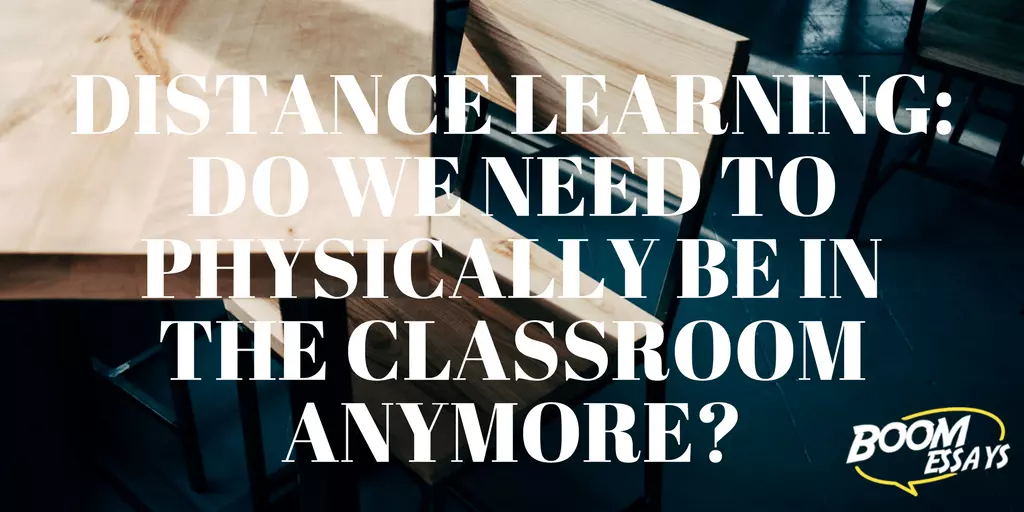
Posted: 02 March, 2017
Distance Learning: Do We Need To Physically Be In The Classroom Anymore?
Distance learning has become a new feature of education, meaning that those who couldn't traditionally access education anymore are now given the opportunity to learn. However, the model of the classroom hasn't changed in over a hundred years. Is there a reason why it needs to be changed now? Is distance learning just a passing fad? This essay will decide if distance learning really is the future of education.
The benefits of the classroom
There's a reason why the classroom has been the model of education for so long. Bringing pupils together in a learning environment has a huge number of advantages. Pupils have direct access with their teacher, meaning that they can ask questions and get help as soon as they need it. They also can interact with others in their class, which leads to peer learning and growth as individuals.
However, the classroom isn't perfect. Class numbers are steadily rising, which means teachers are frequently finding themselves trying to teach classes of over 30 students at a time. That's not a feasible number in the long run, and students are missing out on valuable interaction with their educator, as they're being spread too thin.
Who can benefit from distance learning
There's plenty of students out there who can't access traditional schooling. These include:
- Students who live in remote locations. They can't travel to school as it's too far away, or the travel would be too difficult. If they have an internet connection though, staying in touch with a school is not a problem.
- Students with disabilities: Some students may not be able to access school, as their needs cannot be met by staff at the institution. They also may not physically be able to travel to a school. This means their education and their social life suffers. Distance learning, though, means they can still access learning through essay services and interact with their peers.
- Students who have been excluded: Although students may be excluded for a number of reasons, that doesn't mean their education as to be interrupted. They can still keep by learning online until they find another place of education.
- Students with education phobias: There's students who can't access regular schools due to phobias, or problems rising from bullying. They can stay in a safe environment, while still getting the education they need.
- Students who are on the move: Not every student has the luxury of staying in one place for long. They may have parents who have to move around for work, or are fleeing from war in their own countries. Distance learning means they can access education no matter what.
The benefits of distance learning
So, is distance learning is a boon to so many students, what are the benefits of it for them?
- Students can learn at their own pace: As a distance learner, you're not always having to keep up with the rest of the class. Instead, you can learn at your own pace. This gives you time to get to grips with a subject properly, as you're not being pulled along with others who are already ready to move along. This is especially good for students with disabilities, who may need longer, or more help, to learn a new subject or skill.
- Study wherever you are: For students who are always on the move, this is the biggest benefit to them. If you're not in one place for long, it's impossible to enroll in a regular school. If you're using distance learning though, you can access education as long as you have a WiFi connection.
- Gain qualifications from anywhere in the world: For older students, this can be highly valuable to them. If you study via distance learning, you can gain a qualification from anywhere. that means you can get qualifications in the country you intend to move to, making it easier to find work and pick up the language, too.
The downsides is distance learning
Of course, there are some downsides too when it comes to distance learning.
- Less interaction with peers: Even if you can chat with students online, you're still not going to get the full experience of interacting with others in your class.
- Requires access to technology: Not all students will have access to the tools they'll need for distance learning, such as PCs, iPads, and reliable WiFi connections.
- Format might not be suitable: Everyone learns differently, and you may find that distance learning doesn't work well for you as a student.
As you can see, the benefits of distance learning outweigh the downsides. It's not for everyone, but it will become a bigger part of learning in the future. There's many students out there who will feel the benefit of learning outside the classroom.